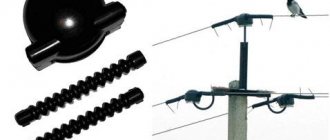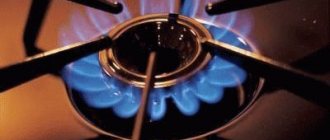It happens that some time after installing the electric stove, it begins to “bite” its owner, that is, for some reason its body begins to shock. These may not be very strong blows, but, of course, they are not pleasant, especially if you touch the stove with wet hands.
This problem must be addressed as soon as the first symptoms appear, otherwise it can lead to serious and life-threatening injuries. It is impossible to name any one reason here, so you should carry out diagnostics and correctly identify the root of the problem in order to then eliminate it.
If you more or less understand the structure of an electric stove and have basic skills in handling a multimeter and an indicator screwdriver, then, in principle, simple diagnostics will be within your power. However, it is important to remember that any repair work with electrical appliances is dangerous if the person does not have experience and qualifications.
It’s better to call a stove maintenance technician with a safety group of at least third, since he knows exactly the weak points of electric stoves, has the relevant experience, and will probably easily determine what and where is wrong in order to quickly fix it!
If you decide to take on the task yourself, then remember that it is necessary to observe safety precautions as much as possible; internal inspection of the stove is carried out only when it is turned off. If the stove is turned on, you should not touch the stove with wet hands, bare feet or damp clothes.
Therefore, first disconnect the stove from the network and inspect the insulation of those wires that are in sight; maybe everything will become clear right away, and you won’t have to disassemble the stove. If, during an external inspection, nothing unusual is revealed, you will have to disassemble the stove and, sequentially disconnecting its components, use a multimeter in ohmmeter mode to test the resistance between the electrodes of the plug so that there are no closed circuits left.
Checking the grounding
Even at the design stage of an electric stove, everything is done in such a way as to prevent any possible current leakage from its components to the housing. This is done by grounding. However, a hole may still appear due to the fact that although everything is working properly inside the slab, there may be no grounding at all outside.
The bottom line is that any normal modern socket has three contacts: “phase”, “zero” and “ground”. But what if there is a ground contact, but the ground is not actually connected to it, or was connected before, but then disappeared for some reason?
Grounding may have stopped performing its function for various reasons: oxidation of the ground wire terminals, overheating factor, excessive exposure to ultraviolet radiation, destructive effects of moisture, etc. One way or another, it is necessary to check the integrity of the ground loop and find out if the power supply is grounded?
First, using a multimeter in voltmeter mode, or using an indicator screwdriver, find the phase and neutral terminals of the socket. Then measure the resistance between the outlet neutral and the ground terminal. Resistance should not be significant.
Also, a phase may appear on the body of the stove even if the grounding in the socket is working properly, but the plug terminal is not in contact with the grounding terminal of the socket. Check it. Finally, it will be necessary to ring the body of the stove and the ground terminal on the plug - the resistance should be almost zero. If a problem is identified at this stage, an electrician will be able to fix it.
Checking the integrity of the insulation
A breakdown in insulation can also cause a phase to appear on the plate body. The insulation can be damaged both at the contact points and on the connecting wires. The integrity of the contacts is checked with a multimeter when the stove is turned off, and an indicator screwdriver is suitable to localize phase leakage on the housing and on the components of the stove. Remember that you cannot touch the stove with your bare hands while the stove is on while using the indicator screwdriver!
Having identified the location of the phase leak, you can then easily find the part of the slab within which the phase is breaking through, which means this part needs to be repaired or replaced.
Are the heating elements intact?
Faulty (broken) heating elements can also cause tension on the stove body. Most often, the oven starts to sin. The heating element may heat up and operate almost as usual, but breakdown will occur and cause some current to flow through the weak point. In this case, it is necessary to completely replace the broken heating element. Replacing the heating element can be done by an electric stove repair technician.
Doesn't the filter break?
An infrequent, but periodically occurring reason for the appearance of alternating voltage on the body of the stove is a breakdown of the capacitor, designed to smooth out impulse noise. This capacitor is installed next to the switching power supply, if one is present in the stove. The current makes its way through the body of the faulty capacitor onto the body of the stove and induces, although not very large, but noticeable and unpleasant to the touch, alternating voltage. The leaking capacitor must be replaced.
Troubleshooting
If you have basic knowledge of electrical engineering, you can try to independently determine the source of current leakage. To do this, you will need a multimeter with a megohmmeter function. Diagnostics consists of several stages:
Disconnecting the stove from the network;
Inspection of electrical wiring insulation (if there are any exposed wires);
Sequential shutdown of functional units (relay, thermostat) in order to find out the location of the leak. It is necessary to disconnect components until the resistance level is restored to an acceptable value;
Any manipulation with electric current poses a serious danger to life. If you do not have the appropriate experience and qualifications, call a specialist to your home who will conduct diagnostics and accurately recognize the vulnerability. Servicing electric stoves at home can only be carried out by electricians with a safety group of at least III, who know the design of electric stoves and have access to equipment with voltages up to 1000 volts.
When inspecting and servicing the electric stove, all precautions should be taken. You can inspect and replace the internal components of the stove if it is turned off and de-energized. It is prohibited to carry out any manipulations with the switched on electric stove in damp clothes or shoes, as well as barefoot and with wet hands.
Possible causes of problems and ways to resolve them
Lack of grounding
Despite the fact that the design of the electric stove was initially designed in such a way as to eliminate any current leakage, voltage on the body can still occur. As a rule, current appears on the walls of the slab due to the lack of external grounding.
Each socket has outputs to three wires, which are called “zero”, “phase” and “ground”. There were no such standards in Soviet-built houses, so there is no grounding there. At the same time, in some modern houses there is grounding only according to documents, but in fact it is missing or does not work correctly.
The main causes of grounding problems:
intense ultraviolet radiation;
temperature too high;
oxidation of ground terminals;
To check the grounding loop, you need a multimeter, with which you need to find a wire with a phase in the socket, and then use the resistance measurement mode to determine whether the power supply is grounded. A phase on the housing may appear due to unreliable grounding contact between the electrical outlet and the stove's power cord plug. Remember: grounding problems should be handled by an electrician.
The electric stove gives an electric shock
There is a regular 2-seater electric stove, I noticed that it was electrifying, so I started checking:
Europlug, the resistance between each of the 2 current-carrying contacts and the ground contact in the plug is more than 5 mOhm, the ground in the plug is connected to the body, everything seems to be normal. But! When turned on and after heating, a voltage of about 60-70 volts appears between each of the 2 current-carrying contacts and the ground. I turn it off, measure the resistance, it is about 1.5 kOhm and increases quite quickly, I won’t tell you the number, I don’t have time to switch ranges on the multimeter.
Those. When heating does the heating element break through to the body? I read somewhere that this is normal for domestic heating elements? In addition, there is also a kettle (everything is plastic, although there is earth in the plug) and a boiler. But I would like to hang an RCD so that it does not constantly trip.
Thanks for the explanation)
miknik wrote: Ie. When heating does the heating element break through to the body?
miknik wrote: I read somewhere that this is normal for domestic heating elements?
A damp new heating element may have increased leakage, but when fried, the leakage goes away.
Here, on the contrary, most likely the coil touches the metal. The tile is DEFECTIVE.
The death of the tile can be accelerated by plugging it into a NORMAL (it looks like you don’t have one) socket with grounding, but without an RCD on this line. Either the machine will knock out, or half of the spiral will burn out.
miknik wrote: But I would like to hang an RCD so that it does not constantly trip.
Check both heating elements of the tile separately. One may have died - replace it. Then it will be possible through an RCD.
miknik wrote: But I would like to hang an RCD so that it does not constantly trip.
Check both heating elements of the tile separately. One may have died - replace it. Then it will be possible through an RCD.
Thank you! I'll try to check it separately today
miknik, most likely you don’t have a ground connection in the socket.
miknik wrote: But I would like to hang an RCD so that it does not constantly trip.
Check both heating elements of the tile separately. One may have died - replace it. Then it will be possible through an RCD.
Thank you! I'll try to check it separately today
I checked that when each of the electric burners (heating elements) is heated, the voltage between the heating element body and the heating element’s incandescent wire reaches 50 volts (the heating element turns red), for the first 10 seconds after turning on there is no voltage, then 1 volt is added every second. Either they both died, or such a quality. used at the dacha for 1.5 years about once a week.
It is fundamentally important to understand if you buy an electric stove, will everyone have this behavior or does it depend on the price?
alex50 wrote: miknik, most likely you don’t have a grounding connection in the socket.
miknik wrote: I checked that when each of the electric burners (heating elements) is heated, the voltage between the heating element body and the heating element’s incandescent wire reaches 50 volts (the heating element turns red), there is no voltage for the first 10 seconds after switching on, then 1 volt is added every second.
- What did you check with?
- And between the second wire?
- Was the second heating element completely turned off?
miknik wrote: Either they both died, or this quality. used at the dacha for 1.5 years about once a week.
It's too early to say.
miknik wrote: It is fundamentally important to understand that if you buy an electric stove, will everyone have this behavior or does it depend on the price?
You can buy induction, but it also needs ground
- two different conventional multimeters.
- in the sense between the housing and another output of the same incandescent wire? No
- Yes, I turned off everything that was not required for the operation of each heating element one by one.
I read about induction, I wonder if there is a conductive body there and if so, what about the leakage current)
Will an electric stove with an open coil produce an electric shock if the cookware touches the coil? People say no! I would like to understand why? 220V supplied! Where does the dangerous tension dissolve?!
When the floors are wet (we've seen all the horror stories, there is water on the floor and someone is standing barefoot) and/or touching another electrical appliance connected to the network (microwave, refrigerator, washing machine), electric shock occurs; the voltage there is usually 110V.
The leakage may also be due to self-induction induced by the internal heater; the spiral increases the self-induction from a simple wire. Let's remember the physics course, wire, battery, compass, light bulb.
You can ring with a multimeter, the plug of the device and the body of the same device are at the limit of megaohms. Provided that the device has a mechanical switch and the device is turned on. mega ohms, this is the highest resistance ohms, the lowest resistance, a piece of wire has almost zero ohms.
The electric stove is shocking
If you get an electric shock from the stove whenever you touch it, this definitely indicates a breakdown. It shouldn't be this way. Many users notice a weak discharge, but continue to use the tile, but even this minor problem can damage the entire device or cause a fire.
Is your stove electrocuting? You need urgent electric stove repair. Our technicians will fix any breakdown of household appliances at the client’s home. We work in all districts of St. Petersburg every day, seven days a week. You can order a specialist visit by calling 8(812)324-97-77 at any time from 7:00 to 23:00 or using the feedback form on the website. If you submit an application before 12:00, the specialist will arrive on the day of your application.
Causes of malfunction
- No grounding. According to technical requirements, the electric stove must be connected to a grounded outlet; it must have 3 wires: zero, phase and ground. The latter is needed just to protect you from electric shock. Modern houses usually have a ground electrode. But in Soviet-built buildings, the sockets are two-phase; there is no grounding factor.
- Insulation wear. The entire electrical network inside the device is built on wires and contacts. The most important thing here is that each element is isolated. To do this, all wires are covered with a layer of PVC. This is a fragile layer of plastic that can be damaged during transportation. And over time, the insulation itself may collapse. If a live wire comes into contact with metal parts of the system, voltage will be transferred to the housing. When touched with wet hands, you will feel a small shock.
- The heating element is broken. The heating elements are located in all heating parts: in the burners and oven (there are from 1 to 4 heaters). Any tubular electric heater consists of a conductive thread and an insulator around it, which transfers heat, but not current. If the insulating material is damaged, the electric stove will generate current and become hot even when it is turned off.
- Water got in. If the stove is located next to the sink or the soup often boils out of the pan, liquid can get inside the system and close the circuit on the metal body of the device. The good news is that the fluid can be removed and the system sealed. There are no serious holes inside the wiring. But if, after water gets in, when you turn on the burner, the plugs come out, you need to call a technician and check the entire structure.
- Electrical network defects. If you have dismissed all the previous reasons, but it is still easy to get a blow from the stove body, perhaps the fact is that the phase and neutral wires were mixed up when connecting. You won't be able to fix this on your own.
Causes and diagnosis
A slight tingling sensation while washing your hands is a serious phenomenon. The reason for this sensation is the breakdown of current, which often happens in old houses.
To identify the problem, it is better to contact a professional.
Common reasons:
- If the water supply comes into contact with an electrical wire. This happens in private houses and apartments. A short circuit occurs due to damage to the electrical cable or contact with metal pipes.
- Accumulation of current on the surface of pipes. In very dry air, grounding does not perform its function well. To avoid this, the air in the bathroom is humidified.
- Plastic pipes, together with metal ones. The reason lies in the fact that the metal pipe performs the grounding function, which the plastic pipe does not.
- High power household appliances are installed. The main thing here is to ensure grounding, otherwise not only the water will shock, but also the surface in the bathroom.
Do not forget to install grounding in the bathroom to prevent possible electric shock.
If the water from the tap produces an electric current, you need to urgently look for the problem. If this is not done on time, the consequences will be so strong that they will seriously harm your health or lead to death.
It is worth paying attention to the following points:
- If electric shock occurs only in the evenings, then the problem is external in nature. If this happens constantly, then this refers to internal problems.
- It is necessary to check the grounding of sockets and electrical appliances.
- If there is a burning smell, or the wiring gets very hot, then there is a problem there.
To find a fault, first check the grounding and insulation of all devices and wiring. It is better to replace the sockets with ceramic ones; they prevent current leakage.
Electric shock when touching the sink
Often, a breakdown of an electric stove can be indicated by an electric discharge from a metal sink nearby. Of course, the sink itself cannot give an electric shock, because there is no electricity in it. But if the wiring in the room is not grounded or the stove is broken, the sink will also become a source of danger. To avoid this, usually the sink and bathtub are grounded to the plumbing pipes using a metal rod. You can entrust this work to a plumber and electrician. But this does not eliminate the need to repair the electric stove.
What to do on your own
If you cannot touch the device without feeling a tingling sensation, you should not try to fix it yourself without special tools and knowledge. But there are several mandatory things that you not only can, but should do:
- Turn off the electricity. This is an ironclad rule: if you feel a blow from the device, turn off the power supply through the shield. And then figure out what happened.
- Check whether water has spilled on the device. Inspect the equipment, check the outlet. There should be no water anywhere. Wipe all parts with a paper towel and dry all parts with a hairdryer if necessary.
- Remove the plug from the socket. This should be done when the entire apartment is de-energized. Otherwise, you can get a serious discharge. When the power to the stove is turned off, you can return electricity to the house.
- Call a specialist. Even if you have an A in physics, you should not repair an electrical appliance without qualifications. At best, this will void your warranty; at worst, it will lead to irreparable damage to your equipment and even a fire. You should call the master from LenByt.
Can I fix it myself?
Any work with electricity is dangerous to human health and life. Therefore, all manipulations for connecting and repairing electric stoves must be carried out by craftsmen who have a special permit to work with electrical equipment.
When handling any electric stove, you must follow safety rules. To do this, you need to de-energize it, i.e. remove the plug from the socket. It is strictly forbidden to carry out any manipulations with the internal parts of the electric stove if it is turned on, especially if you are wearing wet clothes and shoes, barefoot or with wet hands.
In addition, if you decide to repair the stove yourself, you will need a special set of tools and spare parts for repairing electrical equipment. Not every owner has all the necessary tools. And also knowledge! An inexperienced person trying to repair something can cause even more damage to the equipment. And then the repair will be more complicated and cost much more.
What will a repairman do?
The specialist will first carry out diagnostics using a megohmmeter and other professional tools. It is important not only to find a current leak, but also to check all parts for serviceability. Further:
- He will determine the cause of the breakdown and write it down on the receipt. This is an official document and conclusion.
- Check the outlet for grounding. Often there is a yellow-green wire in the outlet (the universal color for marking “ground”), but you need to check if it is working.
- Grounds the device. Important: the slab is grounded only if the house already has a grounding element. If the device is located in a building where there is no grounding structure, it is better to contact an electrician for help.
- Restores circuit insulation, cleans contacts from dust and grease deposits. Food particles often get on the contacts and wires of an electric stove, forming a coating that perfectly conducts electricity. To avoid problems, you need to clean these elements regularly.
- Replaces a broken part: heating element, capacitor, wires, etc. Our company uses only original spare parts from the brands Gefest, Electrolux, Gorenje, Kaiser, Indesit, Zanussi, Hansa and others.
- Will provide a guarantee on all work and components.
The electric stove generates electricity, what should I do? – Handyman's Handbook
The hood must not pose a danger to those who use it. Moreover, its main purpose is to create comfortable conditions for human living. This device allows you to cook food without worrying at all that the entire apartment will be saturated with unpleasant odors, and the furniture will be covered with greasy deposits and soot.
To understand the reason why the hood is not working, you need to have basic knowledge about the design of the device, its operating principle and technical features. The main element of all hoods is an electric motor that rotates the fan . The air flow created by the fan draws out fumes and odors generated during cooking.
There are two types of fans used in hoods: axial and tangential. The air flow passes through filters, on which odors and fatty fumes are deposited.
Manufacturers offer two types of hoods: filtering (recirculation) and exhaust. The first type of hoods cleans the air of odors and smoke and then returns it to the room.
Exhaust hoods remove contaminated air outside the kitchen. Most modern hoods can operate in both recirculation and exhaust modes.
Determining the type of hood is quite simple. The exhaust outlets have a special outlet for connecting the air duct, while the recirculation outlets do not have one. If possible, it is better to connect the hood to the ventilation system, as this increases the efficiency of air purification .
Air purification is carried out using filters. Immediately behind the air intake grille there is a grease filter, and behind it is a carbon filter. The latter is designed to absorb odors. Grease filters can be reusable or disposable, but reusable mesh metal grease traps are most widely used.
In addition to filters and a fan, the hoods also have a control panel and a lighting system.
The control can be mechanical or touch, and different types of lamps are installed in the backlights. The most advanced models are equipped with LED lamps and a variety of sensors that monitor the operation of the equipment and report on its condition.
Possible causes of malfunction
It must be taken into account that moisture and electricity are always present in the kitchen. Grease, dust and moisture accumulate inside the hood. At high temperatures, all these components create excellent electrical conductivity , so the hood body can “shock.”
If the hood starts to shock, you must first clean its internal elements .
To clean the hood, you need to disconnect it from the power supply, disconnect the air duct pipe and electrical wires, and then remove the device itself.
The removed hood, depending on the design of the hood, is disassembled to provide access to contaminated elements. They are cleaned with a sponge and soap. After cleaning, the hood is dried and installed back.
Clogged filters also need to be cleaned promptly . Carbon filters for hoods operating in recirculation mode should be changed every 4-6 months (depending on the intensity of use of the device). It is advisable to clean grease filters after 2-3 months of operation.
Damage to electrical wiring
If the hood begins to shock, this may mean that its body is under a slight electrical voltage. In other words, electric current leaks onto the walls of the housing. This may be due to damage to the electrical wiring . If such damage is present in the hood, then its further use becomes dangerous.
https://www.youtube.com/watch?v=-I84RGHz6_g
To find out, it is necessary to carefully inspect the wiring to examine the integrity of the insulating material. If exposed wires are detected, they must be insulated, avoiding close contact with the device body.
Kitchen hoods must be connected to the electrical network with three wires: phase, neutral and ground. The ground wire has yellow insulation with a green stripe. When installing the hood, this wire is connected to the corresponding terminal, which is indicated by a sign in the form of a pyramid - 3 lines of different lengths.
Grounding the hood is not a problem if the house has special grounding sockets . But the majority of residential buildings in our country are not equipped with such sockets, since grounding was not mandatory in the USSR. In modern residential complexes it may also be absent.
To find out whether the house has a grounding system, you need to contact the Housing Office. If there is such a system, there must be a special wire on the distribution panel. Then three-channel electrical wires should be used to connect the sockets, and they will all be connected to ground.
Where there is no standard grounding, it must be done . You should find “ground” on the electrical panel at the entrance. This will most likely be a metal pin threaded onto a pipe. The ground wires are attached to this pin.
From this grounding it is necessary to connect a wire to the place where the hood is installed. Its cross-sectional area must be at least 2.5 square meters. mm. It is better not to disconnect the remaining ground wires.
It is recommended to connect the hood itself to the mains through a separate circuit breaker with a resistance of 6 Amps.
Creating grounding on your own is a rather troublesome task that requires appropriate knowledge. If you entrust the solution to this problem to an amateur, the consequences will most likely be quite dire. Therefore, it is better to turn to professionals for help . It is also necessary to take into account that replacing electrical wiring and sockets will require significant financial investments.
To protect yourself from electric shock, you can install an RCD - a residual current device. The main function of this device is to monitor electrical voltage and turn it off if necessary.
Simply put, if problems with the wiring occur, the RCD will be able to turn off the electrical voltage in time and protect a person from serious injury .
This small device can save your life in the event of extreme power surges.
Having analyzed all of the above, we can draw the following conclusions:
- If the wiring in the apartment has three terminals (zero, phase and ground), and the hood still gives an electric current, you should check the ground wire to find out if it is damaged. This can be done using a tester;
- if the apartment has standard wiring, that is, with two wires (zero and phase), then it is advisable to organize a separate grounding for the hood. It is strictly prohibited to use water pipes for this purpose;
- if the wiring has two wires and there is no way to ground it, then you must use at least an RCD mounted in the socket.
As a rule, hoods have reliable insulation of electrical circuits, so if the device starts to shock, then most likely the housing is not grounded.
Grounding is also necessary to protect the motor and electronics from power surges.
It is unlikely that it will be possible to solve this problem on your own, since only a highly qualified specialist can ground the hood in accordance with all standards for the design of grounding systems.
Source: https://reminform.com/elektroplita-bet-tokom-chto-delat/
Causes and features of failure
Once again, it is important to emphasize that if an electric stove produces an electric shock, this indicates serious problems in its internal structure. Factory defects cannot be completely ruled out, therefore, we recommend that you carefully check your household appliances before you buy them. Purchase the presented devices only from reliable manufacturers and with appropriate quality marks. Timely maintenance is also the key to long and uninterrupted operation of the stove.
Another important point is compliance with all safety standards and regulations when carrying out installation and dismantling (for example, when moving) work. It must be carried out in strict accordance with technical and operational requirements. Entrust them only to trusted specialists with a sufficient level of qualifications and experience in this field.
The most common causes of the presented defect:
- Destruction of contacts during operation, oxidation.
- Accumulation of dirt and grease in elements adjacent to the wires.
- Deformation or deterioration of grounding.
- The heating element breaks through.
- Failure to comply with permissible voltage requirements.
- The phases are incorrectly connected. Violation of their integrity during use.
- Mechanical damage to electrical wiring elements.
- It breaks the socket.
If the electrical wiring, heating element, or socket fails, an urgent replacement of these elements with new ones is required. The modern market for electrical components is oversaturated with low-quality analogues that do not provide either the original characteristics of the product or a long service life. Replacement should be carried out only with parts recommended by the manufacturer. Otherwise, the risk of repeated breakdown, and, consequently, repeated repairs increases significantly.
Common Causes
Why can the stove pass current to the body? There may be several reasons.
- No external grounding. A modern electric stove is designed in such a way that there should be no electric current on the stove body. It can occur if there is no external grounding. Either the socket into which the stove is plugged in is old and does not have a grounding circuit, or the contacts providing grounding have oxidized.
- Violation of wire insulation. When contacts oxidize or break, the wires may come into contact with the body of the plate, and current flows through the body.
- Deposits of dirt, carbon deposits, grease drops, water ingress on internal elements in contact with wires, which can form a conductive “bridge”.
- The heating element penetrates the body of the plate.
- Mechanical damage to the electrical wiring inside the stove.
- Errors in phase connection.
- Socket malfunction.
Do-it-yourself electric stove repair
If a malfunction occurs, you can try to fix it yourself. But this solution seems beneficial only at first glance. Without experience and a special diagnostic tool, it is impossible to determine the exact cause of the device failure. Next, the problem arises with the selection of components and spare parts necessary for repair. Looking for them in specialized stores or on the Internet is a very time-consuming business.
While a service center specialist will quickly select all the parts for you and advise on the specifics of their operation. Statistics show that independent intervention in the vast majority of cases does not end as expected. In addition, there is a high probability of causing even greater damage to the equipment that was before. Therefore, we do not recommend that you take risks, and if you suspect a serious hardware failure, immediately seek help from specialists. The sooner the problem is fixed, the better.
Professional repair of household appliances
When you contact the service center, you get access to the highest level of restoration and warranty service in the capital region. We offer you the following terms of cooperation:
- A completely transparent budgeting scheme, pricing without markups.
- Use only original spare parts.
- A wide range of services provided, in addition to electric stoves, we repair gas equipment, washing machines, refrigerators, microwave ovens, sewing machines, you can call an electrician, plumber, or handyman for an hour.
- Masters of a high level of qualification and with extensive experience in the field.
- An integrated approach to solving problems with household appliances.
- Departure of craftsmen to any district of Moscow.
- Long warranty period of service.
- Models both currently popular and those already discontinued are accepted for repair.
- Repair at a time convenient for the customer.
You can order this service by calling 8(495)777-19-19, or by leaving a request directly on the website. The workshop hours are from 7 a.m. to 11 p.m. No weekends or holidays. All work is carried out in a short time frame, you can be 100% sure of the high quality of the services provided.
What to do if the gas stove does not work well - causes and solutions
Gas stoves attract consumers due to their ease of use and low cost of fuel. However, we should not forget that when operating such a device, certain safety rules must be observed. You cannot turn on the gas if the gas stove is not working well, otherwise it will lead to disastrous consequences. If a breakdown is detected, you must call a specialist who can fix it.
Diagnostics and self-repair
The main problem that an inexperienced user faces during diagnostics is identifying the specific source of the defect, since the external manifestations are always the same (the device begins to shock when touching the surface). The most you can find out yourself is a malfunction of the socket. In this case, the user must have at least basic knowledge of electrical engineering, as well as sufficient experience in handling a multimeter or other measuring equipment.
Unskilled intervention in the design of the device for the purpose of repair has a lot of negative consequences.
- Receiving injuries (cuts, bruises) due to violation of safety regulations.
- There is a high risk of damaging other operating components when disassembling the stove/oven carelessly.
- Bringing equipment to a state of complete unusability, especially when it comes to working with electronic modules or replacing heating elements.
Unqualified repairs can lead to the purchase of a new stove, which means additional unforeseen financial expenses. The cost of the issue can be tens of times less if you call a specialist who will arrive at a convenient time, quickly identify the source of the breakdown and carry out all the necessary actions to correct the defect within 1-2 hours.
Damage to gas stoves that you can fix yourself
In large cities, calling a specialist to your home to fix gas stove breakdowns is not difficult. It is more difficult for those who live in small, remote villages and towns - there may not be a specialized master nearby. However, there is a list of faults that you can fix yourself without involving a specialist.
Smell of gas
The smell of gas is a dangerous sign that indicates depressurization of the gas supply system. This problem can occur both when the device is turned off and while the stove is operating. In the first case, you must immediately turn off the gas and ventilate the room. After this, the location of the depressurization is determined - soapy water will help to do this. It is applied to all connection elements: pipes, hoses and their joints. Bubbles will appear at the leak site.
If a threaded connection is depressurized, perform the following actions:
- disassemble the damaged unit, clean them of old sealant or winding;
- apply fresh sealant;
- All parts are reassembled and the operation is checked.
If depressurization occurs with the gasket, then:
- disassemble the unit;
- They install a new gasket, put everything back together, and check it.
If the smell appears only when the stove is turned on, the cause may be:
- incorrect flame adjustment;
- leakage at the junction of the tubes with the nozzles or the joints between the tubes and the nozzle bodies.
To determine the location of the leak, it is necessary to remove the burners, remove the cover and return the burners to their place, apply a soap solution to the connection points and light the burners one by one.
The cause of the malfunction may also be the destruction of the sealing washers, too loose tightening, or a defective o-ring. If the leak has not been found, call a technician and do not use the device until the problem is fixed.
Gas stove smokes
If the color of the flame has changed from blue to yellow-red, then this indicates unstable operation of the burner device. In most cases, fixing this problem is quite easy. Depending on the cause, there are the following methods to solve the problem:
- clogging of the flame divider - remove and wash the part, wipe it dry and put it back in place;
- clogging of the nozzle - remove the cover, flame arrester and clean the nozzle;
- deformation of the flame divider - replace the part with a new one;
- low gas quality (occurs when using fuel from household cylinders) - gas replacement is required;
- high gas pressure in the cylinder - the fuel supply reducer needs to be adjusted.











